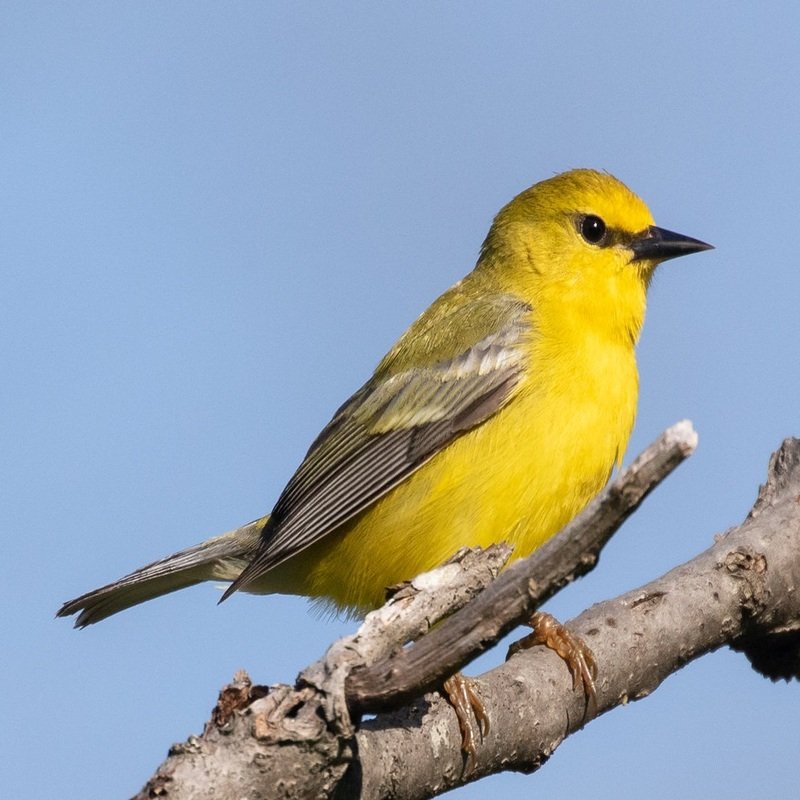Blue-winged warblers, Vermivora Cyanoptera are a reasonably common warbler in the New World. It is expanding its range northward, displacing the closely related golden-winged warbler, Vermivora chrysoptera. The blue-winged warbler was one of the several species documented by Carl Linnaeus in his 18th-century work Systema Naturae, however, its scientific name has changed multiple times.
Quick Overview: Vermivora Cyanoptera – Blue-Winged Warblers
Body size: Around 4.75 in (12 cm) and a weight of 9 g (0.3 oz)
Main colors: Olive-Green, Yellow, Black, Gray, White
Range: Eastern United States
Migratory Bird: Yes
Best time of the year to see in the U.S.: March, April, May, September, October, November
Conservation Status: Least Concern
Blue-Winged Warblers Description
Olive-green upperparts and yellow underparts distinguish this medium-sized warbler. Yellow is the predominant color on the head, with a faint black eye line and an olive-green nape. Dark gray wings with two white bars.

Size
These birds have a length of 4.75 in (12 cm) and a weight of 9 g (0.3 oz). Their wings could range from 6.75-7.5 in (17-19 cm).
Feeding
Blue-winged Warblers feed on caterpillars, crickets, grasshoppers, spiders, flies, ants, and beetles, which they frequently pluck off clusters of dead leaves while dangling upside down chickadee-like.
Habitat
They are primarily found in abandoned areas that are densely forested with shrubs and trees and are surrounded by tall deciduous trees.
Behavior
Blue-winged warblers interact with conspecifics in a variety of ways depending on the season, sex, and type of interaction. They are violent toward intruders on their established breeding grounds during the breeding season. When another species’ or a different species’ invader enters their territory, they reply with tail-spreading and crown-raising displays. Aggressive physical activities include pursuing, flying past, and violently combating the intruder.
Vermivora Cyanoptera Scientific Classification
- Kingdom: Animalia
- Phylum: Chordata
- Class: Aves
- Order: Passeriformes
- Family: Parulidae
- Genus: Vermivora
- Species: Vermivora cyanoptera
Best time of the year to see
In the United States, the best time of year to see these birds are during the Spring season (March-May) and during the Autumn season (September – November).
Distribution of the Blue-Winged Warblers in the USA
Breeds from Minnesota, central Iowa, Wisconsin, southern Ontario, and central New England south to northern Georgia, passing through east-central and Atlantic coast states. Tropical winters. North Carolina, South Carolina, Connecticut, Florida, Kentucky, Massachusetts, Michigan, New York, and Ohio all have populations of the species.
The Blue-Winged Warblers can be found in the following states in the United States –Alabama, Alaska, Arkansas, Delaware, Hawaii, Illinois, Indiana, Kansas, Louisiana, Maine, Maryland, Mississippi, Missouri, North Carolina, Oklahoma, Pennsylvania, Rhode Island, Tennessee, Texas, Vermont, Virginia, and West Virginia.

